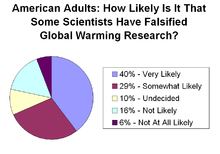California Remedy For Eco-Guilt
MAR. 5, 2012
While the Legislature has cavalierly passed global warming laws and companion legislation, they’ve done so without a clue about how the California Air Resources Board would actually achieve carbon emission reductions. It truly is a “if you build it, they will come” tipping point for California.
Last week I attended a hearing held by the Legislature about how the state’s cap-and-trade auction revenues would be created, and expenditures allocated.
Instead of providing affirmative plans to accomplish this feat, and answers to legislators’ questions, it became abundantly clear that no one in the state has a handle on the implementation of AB 32, the Global Warming Solution Act of 2006, or the potential repercussions from the vast law.
But even more concerning is the CARB-induced cap on greenhouse gas emissions levels, significantly lower than 2008 emission levels in California.
It is evident that CARB’s strict cap on emissions will enforce limits on greenhouse gas emissions that will not allow the precarious California economy to recover to even pre-recession levels. Meeting these emission standards will be impossible, and the cost to business will be too great.
Additionally, CARB has established the cap at a level that will create a scarcity of electricity, by reducing the supply of electricity to the state.
This carbon offset buying and selling comes with no rules, little regulatory oversight, no enforcement or proof of environmental claims, no way of measuring the carbon savings and no guarantees that planting forests or building windmills will ever be finished, or ever work.
Cap and Trade Rules
Under the cap-and-trade program, CARB will establish a cap on greenhouse emissions on businesses in California. Then it will allocate tradable allowances to certain utilities and industries.
The first phase of the program, beginning in January 2013, will apply to 350 electric utilities, importers of electricity and heavy industrial users of energy. This will effect nearly 600 facilities, such as electric generating stations, refineries, cement kilns and other manufacturing facilities.
Instead of selling carbon credits, the program will begin with CARB giving away free carbon allowances to a select group — “to the State’s large industrial emitters as well as the State’s electric utilities in order to reduce the economic impact of the cap-and-trade program,” a background paper explained.
But a Los Angeles Times editorial last week advised CARB not to do the carbon give-away, and to “just do it” by picking an arbitrary price on carbon, then charge for it.
That’s the level of sophistication we are dealing with in this life-or-death global warming game. Death is sure to come to manufacturing and big industries.
The editorial writer admitted that trading carbon emissions “hasn’t worked out as well as the plan’s most ambitious cheerleaders hoped,” and said that in British Columbia, cap and trade so far is a “non-starter.”
Carbon Trading Charade
While the climate-change alarmists continue to play the hysteria harp, there are more and more real scientists proving that this is just a well-orchestrated scheme to extort money from business.
“Carbon offsets are nothing more than the environmental equivalent of financial derivatives: complex, unregulated, unchecked and — in many cases — not worth their price,” the Christian Science Monitor wrote, in a joint investigation with the New England Center for Investigative Reporting.
Known as hedge derivatives, California’s cap and trade program sounds as if the state is getting into a derivative market, where investors get involved in betting, trading and profiting on the value of carbon credit shares.
The total farce of the scheme is that businesses get conned into buying “green credits,” and then naively claim they’ve offset their own carbon emissions.
Yeah right. If I am a polluter, I know that I am polluting. Purchasing guilt credits isn’t going to change that. But there are many other ways businesses can legitimately clean up their output, and California has proven that for decades. So why is this charade needed?
Assemblywoman Diane Harkey, R-Dana Point, expressed her concerns at the hearing about how the overall program will work, and whether the program will actually result in lower greenhouse gas emissions. She suggested that it may just be a scheme to allow vast sums of money to change hands, with investors eventually getting rich off of market speculation, and no improvement in the reduction of emissions.
Harkey is right. But who in California is listening? Certainly not CARB Director Mary Nichols, who appears to answer to no authority in the state, and makes a regular practice of skipping legislative hearings in which she might get filleted and grilled. Apparently, Nichols is the law in California, as CARB is writing the rules as they go.
The investigation into the carbon-trading scheme found that individuals and businesses participating in the $700 million global carbon offset market, “are often buying vague promises instead of the reductions in greenhouse gases they expect.”
“They are buying into projects that are never completed, or paying for ones that would have been done anyhow,” the investigation found. “Their purchases are feeding middlemen and promoters seeking profits from green schemes that range from selling protection for existing trees to the promise of planting new ones that never thrive. In some cases, the offsets have consequences that their purchasers never foresaw, such as erecting windmills that force poor people off their farms.”
What more evidence needs to be presented before California legislators prevent this train wreck, and stop participating in this scheme?
As with most schemes, the hitch is in the amount of guilt the con artist can make the dupe feel. Buying carbon offsets may ease eco-guilt, but it will do absolutely nothing to end global warming.
Katy Grimes
Related Articles
AB 32 revenue: Some for bullet train, some for pork, none for poor
Before and after AB 32’s passage in 2006, a whole lot of promises and guarantees were made. Some are remembered.
Green Energy Bill Headed to Gov.
MARCH 30, 2011 By KATY GRIMES A bill that would increase California’s energy costs by $7 billion finally made it
Growing Government, Not Crops
Katy Grimes: Under the cover of California’s global warming act, legislators want to create another quasi-state agency to assist with




